- Calendar
- Online Ticket Sales
- Access
- JA
- EN
Commemorating the 120th Anniversary of His Death
Émile Gallé: Longing for Paris
February 15 to April 13, 2025
*Download the list of changes in works on display
*There will be an exhibition change during the course of exhibition.
*This exhibition designates 10:00-11:00 as “Silent Viewing Hour” during which photography and conversation are prohibited.
*Photography is permitted in this exhibition except from 10:00 to 11:00.
*This is a traveling exhibition held at the Toyama Glass Art Museum from November 2, 2024, to January 26, 2025.
The list of changes in worksPDF
*The order of chapters may change at the exhibition venue.
Prologue
The Young Gallé at His First Paris Expo, 1867
Émile Gallé’s father, Charles Louis Edouard Gallé (1818‒1902), was a painter of porcelain, made Nancy his base upon his marriage and then took over his wife’s family business, which dealt in crystal and porcelain. Charles put great emphasis on sales in Paris. Starting around 1854, he arranged for a consignment agent in Paris, to expand the market for the company’s products. In 1866, Charles was honored with the title “merchant by appointment to the Emperor.” At the Exposition Universelle of 1867 (the 1867 Paris Expo), he was awarded an honorable mention in the crystal, deluxe glass, and stained glass class.
Émile Gallé (“Gallé,” hereafter) had been working since 1864 in the family business, helping with ceramic designs. In 1867, he spent half a year in Paris assisting his father at the Expo. In this section, as the introduction to this exhibition, we present works by the young Gallé that were the starting point of his career.
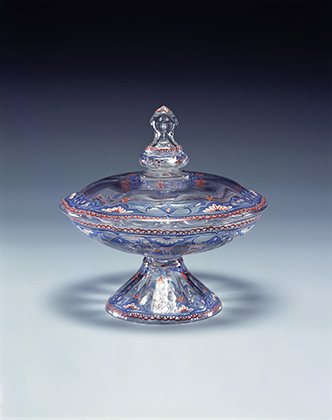
Émile Gallé, 1870s, Pola Museum of Art
【To be shown over an entire period】
Section 1
Gallé’s International Debut: From the 1878 Paris Expo to the 8th Union Centrale des Arts Décoratifs Exhibition in 1884
Gallé took over the family business in 1877. The 1878 Paris Expo the following year, at which for the first time he directed both the management and the creative aspects of the company’s participation, was his debut on the international stage. The Expo’s 19th class (crystal, glass, and stained glass) included exhibits by Baccarat, Saint-Louis, and other major makers. Among them, Gallé was awarded a bronze medal, a propitious start to his international career. He presented works with Japanese motifs, reflecting the Japonisme boom, and his pale blue claire de lune.
Next, Gallé participated in the 8th Exposition de l'Union centrale des Arts décoratifs (Central Union of Decorative Arts Exhibition), held in Paris in 1884. For that exposition, Gallé provided the judges with detailed explanations of his works. In those explanations, which describe how he carried out research and achieved innovations in glass and ceramic production methods and decorative techniques in preparation for that event, we see Gallé full of energy and ambition. Through the works in this section, we introduce Gallé’s early period, when he was first welcomed in Paris.
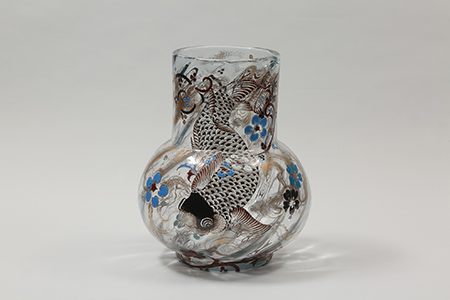
Émile Gallé, 1878, Daiichi Museum
【To be shown over an entire period】
Sidebar 1
L’Escalier de Cristal, Gallé’s Agent in Paris
Gallé and his father had, while based in Nancy, worked hard to promote sales in Paris, employing an agent to handle commission sales there. Gallé continued that practice. In 1879, Marcelin Daigueperce (1844–1896) was appointed the Gallé’s official commissioned-sales agent (dépôt), with a store in Paris. Following Marcelin’s death, his son Albert Daigueperce (1873–1966) succeeded him in this role.
Besides setting up the Paris showroom with the sales agent, Gallé also relied on luxury retailers for sales. Among them was the fine art and craft store L’Escalier de Cristal. Here we present examples of works by Gallé licensed for sale by L’Escalier de Cristal.
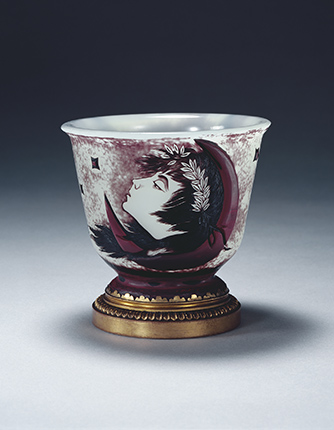
Émile Gallé, 1887–98, Woodone Museum of Art
【To be shown over an entire period】
Section 2
The 1889 Paris Expo and Glorious Renown
After that promising start, Gallé achieved truly brilliant success at the 1889 Paris Expo. As a result of his extensive scientific studies of glass, he had developed new materials and techniques. At this Expo, he showed about 300 glass works, 200 ceramic vessels, and 17 pieces of furniture. He had prepared not only that huge exhibit but also two pavilions. The result was an enormous success: he was awarded the Grand Prix in the glass class, a gold medal in the ceramics class, and a silver medal for furniture which he had just begun production in 1886. Among them, the group of works in which he made use of black glass, displayed at this Expo, succeeded in generating a unique world expressing suffering, life and death, darkness, and gloom. That Gallé’s works were richly endowed with both narrative qualities and spirituality made them an outstanding feature of the 1889 Expo.
As a result of those achievements, Gallé was made a member of the Société Nationale des Beaux-Arts the next year. Membership gave him the chance to display his work at the Société’ s annual exhibition in Paris. In this section, we invite you to view the results of Gallé’s dramatic achievements at the 1889 Paris Expo.
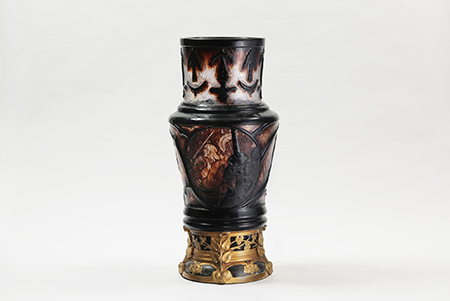
Émile Gallé, 1889, Daiichi Museum
【To be shown over an entire period】
Sidebar 2
Interactions with the Paris Salon
Thanks to the opportunities created by the brilliant renown he achieved at the 1889 Paris Expo, Gallé expanded his engagement with Parisian high society. At the Expo, he met Count Robert de Montesquiou-Fezensac (1855–1921), a key figure in the Paris salon; that crucial event helped Gallé build relationships with icons in the arts and culture and influential members of society. That expanded network also led to the elevation of Gallé himself to celebrity status in Paris. Public opinion in fin de siècle France was rattled, however, by the social issues surrounding the Dreyfus affair, a conflict in which Gallé himself took unexpected responsibility. This section introduces works that illustrate his ties with Parisian society.
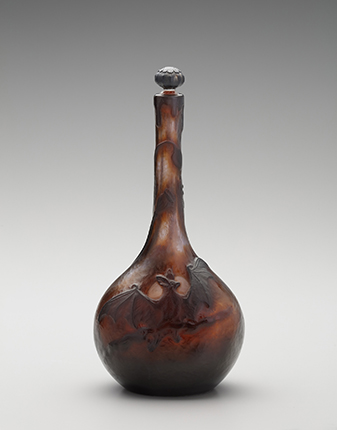
Émile Gallé, 1892, Suntory Museum of Art
【To be shown over an entire period】
Section 3
1900, the First 20th Century Paris Expo
The Paris Expo held in 1900 was the grandest and most gorgeous international stage in French history. There was, however, major opposition to holding it at all from other cities in France, which would not benefit from it. The leader in raising those critical voices was the city of Nancy, Gallé’s hometown. By then, however, Gallé was not just a citizen of Nancy; as France’s leading decorative artist, he had a firmly established position in Paris. His radical actions as one of the supporters of Dreyfus, who was falsely accused of espionage in 1894, in what is known as the Dreyfus affair, bought Gallé opposition in Nancy, where nationalism erupted. Treated favorably in Paris, attacked in Nancy, Gallé suffered incredible psychological pressure, torn between Nancy and Paris, between his home and the international city.
That was the state in which Gallé prepared for the 1900 Paris Expo. The works in glass he showed presented a unique worldview, in terms of both form and concept, that stirred the hearts of those who saw them. In this section, we focus on works from about 1900 in showcasing Gallé’s many masterpieces.
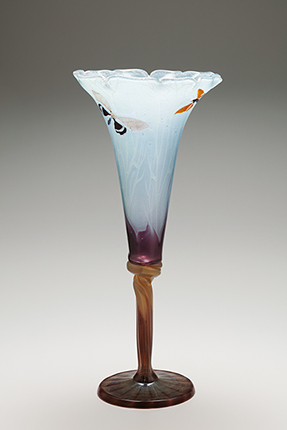
Émile Gallé, 1900, Suntory Museum of Art
【To be shown over an entire period】
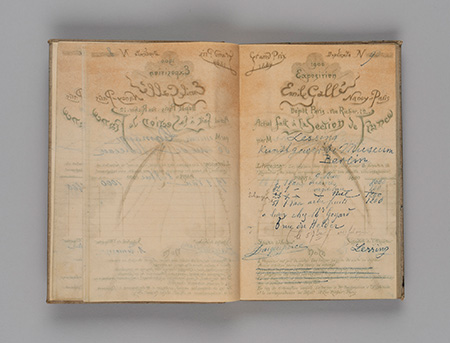
1900, Suntory Museum of Art
【To be shown over an entire period】
Epilogue
Beyond the Glory
Although Gallé had achieved great success by 1900, behind it lay the exhaustive preparations he had engaged in for the Expo and also the backlash he experienced in Nancy because of his fame, amidst battles over social issues. From around 1901, the first year of the new century, he repeatedly underwent medical treatment. On September 23, 1904, Gallé died of leukemia, at the age of 58. In considering the works in the Epilogue, please reflect on his spirit in his last four years, 1901 to 1904, during which he was probably aware of death’s approach, and on the works that are the culmination of a life dedicated to his intense engagement with his unique art.
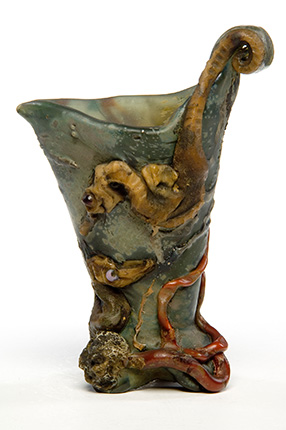
Émile Gallé, 1901, Paris, musée des Arts décoratifs
【To be shown over an entire period】
https://madparis.fr/
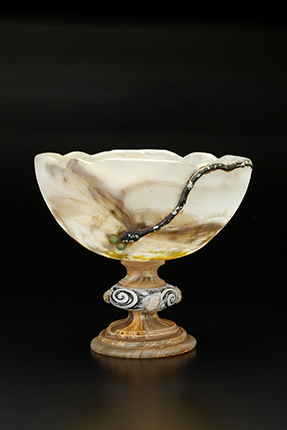
Émile Gallé, 1903–04, Suntory Museum of Art
【To be shown over an entire period】
*Unauthorized reproduction or use of texts or images from this site is prohibited.
2024 January
- Exhibition
- Closed
- Tea Ceremony
- Mon
- Tue
- Wed
- Thu
- Fri
- Sat
- Sun
- 1
- 2
- 3
- 4
- 5
- 6
- 7
- 8
- 9
- 10
- 11
- 12
- 13
- 14
- 15
- 16
- 17
- 18
- 19
- 20
- 21
- 22
- 23
- 24
- 25
- 26
- 27
- 28
- 29
- 30
- 31
2024 February
- Exhibition
- Closed
- Tea Ceremony
- Mon
- Tue
- Wed
- Thu
- Fri
- Sat
- Sun
- 1
- 2
- 3
- 4
- 5
- 6
- 7
- 8
- 9
- 10
- 11
- 12
- 13
- 14
- 15
- 16
- 17
- 18
- 19
- 20
- 21
- 22
- 23
- 24
- 25
- 26
- 27
- 28
- 29
2024 March
- Exhibition
- Closed
- Tea Ceremony
- Mon
- Tue
- Wed
- Thu
- Fri
- Sat
- Sun
- 1
- 2
- 3
- 4
- 5
- 6
- 7
- 8
- 9
- 10
- 11
- 12
- 13
- 14
- 15
- 16
- 17
- 18
- 19
- 20
- 21
- 22
- 23
- 24
- 25
- 26
- 27
- 28
- 29
- 30
- 31
2024 April
- Exhibition
- Closed
- Tea Ceremony
- Mon
- Tue
- Wed
- Thu
- Fri
- Sat
- Sun
- 1
- 2
- 3
- 4
- 5
- 6
- 7
- 8
- 9
- 10
- 11
- 12
- 13
- 14
- 15
- 16
- 17
- 18
- 19
- 20
- 21
- 22
- 23
- 24
- 25
- 26
- 27
- 28
- 29
- 30
2024 May
- Exhibition
- Closed
- Tea Ceremony
- Mon
- Tue
- Wed
- Thu
- Fri
- Sat
- Sun
- 1
- 2
- 3
- 4
- 5
- 6
- 7
- 8
- 9
- 10
- 11
- 12
- 13
- 14
- 15
- 16
- 17
- 18
- 19
- 20
- 21
- 22
- 23
- 24
- 25
- 26
- 27
- 28
- 29
- 30
- 31
2024 June
- Exhibition
- Closed
- Tea Ceremony
- Mon
- Tue
- Wed
- Thu
- Fri
- Sat
- Sun
- 1
- 2
- 3
- 4
- 5
- 6
- 7
- 8
- 9
- 10
- 11
- 12
- 13
- 14
- 15
- 16
- 17
- 18
- 19
- 20
- 21
- 22
- 23
- 24
- 25
- 26
- 27
- 28
- 29
- 30
2024 July
- Exhibition
- Closed
- Tea Ceremony
- Mon
- Tue
- Wed
- Thu
- Fri
- Sat
- Sun
- 1
- 2
- 3
- 4
- 5
- 6
- 7
- 8
- 9
- 10
- 11
- 12
- 13
- 14
- 15
- 16
- 17
- 18
- 19
- 20
- 21
- 22
- 23
- 24
- 25
- 26
- 27
- 28
- 29
- 30
- 31
2024 August
- Exhibition
- Closed
- Tea Ceremony
- Mon
- Tue
- Wed
- Thu
- Fri
- Sat
- Sun
- 1
- 2
- 3
- 4
- 5
- 6
- 7
- 8
- 9
- 10
- 11
- 12
- 13
- 14
- 15
- 16
- 17
- 18
- 19
- 20
- 21
- 22
- 23
- 24
- 25
- 26
- 27
- 28
- 29
- 30
- 31
2024 September
- Exhibition
- Closed
- Tea Ceremony
- Mon
- Tue
- Wed
- Thu
- Fri
- Sat
- Sun
- 1
- 2
- 3
- 4
- 5
- 6
- 7
- 8
- 9
- 10
- 11
- 12
- 13
- 14
- 15
- 16
- 17
- 18
- 19
- 20
- 21
- 22
- 23
- 24
- 25
- 26
- 27
- 28
- 29
- 30
2024 October
- Exhibition
- Closed
- Tea Ceremony
- Mon
- Tue
- Wed
- Thu
- Fri
- Sat
- Sun
- 1
- 2
- 3
- 4
- 5
- 6
- 7
- 8
- 9
- 10
- 11
- 12
- 13
- 14
- 15
- 16
- 17
- 18
- 19
- 20
- 21
- 22
- 23
- 24
- 25
- 26
- 27
- 28
- 29
- 30
- 31
2024 November
- Exhibition
- Closed
- Tea Ceremony
- Mon
- Tue
- Wed
- Thu
- Fri
- Sat
- Sun
- 1
- 2
- 3
- 4
- 5
- 6
- 7
- 8
- 9
- 10
- 11
- 12
- 13
- 14
- 15
- 16
- 17
- 18
- 19
- 20
- 21
- 22
- 23
- 24
- 25
- 26
- 27
- 28
- 29
- 30
2024 December
- Exhibition
- Closed
- Tea Ceremony
- Mon
- Tue
- Wed
- Thu
- Fri
- Sat
- Sun
- 1
- 2
- 3
- 4
- 5
- 6
- 7
- 8
- 9
- 10
- 11
- 12
- 13
- 14
- 15
- 16
- 17
- 18
- 19
- 20
- 21
- 22
- 23
- 24
- 25
- 26
- 27
- 28
- 29
- 30
- 31
2025 January
- Exhibition
- Closed
- Tea Ceremony
- Mon
- Tue
- Wed
- Thu
- Fri
- Sat
- Sun
- 1
- 2
- 3
- 4
- 5
- 6
- 7
- 8
- 9
- 10
- 11
- 12
- 13
- 14
- 15
- 16
- 17
- 18
- 19
- 20
- 21
- 22
- 23
- 24
- 25
- 26
- 27
- 28
- 29
- 30
- 31
2025 February
- Exhibition
- Closed
- Tea Ceremony
- Mon
- Tue
- Wed
- Thu
- Fri
- Sat
- Sun
- 1
- 2
- 3
- 4
- 5
- 6
- 7
- 8
- 9
- 10
- 11
- 12
- 13
- 14
- 15
- 16
- 17
- 18
- 19
- 20
- 21
- 22
- 23
- 24
- 25
- 26
- 27
- 28
2025 March
- Exhibition
- Closed
- Tea Ceremony
- Mon
- Tue
- Wed
- Thu
- Fri
- Sat
- Sun
- 1
- 2
- 3
- 4
- 5
- 6
- 7
- 8
- 9
- 10
- 11
- 12
- 13
- 14
- 15
- 16
- 17
- 18
- 19
- 20
- 21
- 22
- 23
- 24
- 25
- 26
- 27
- 28
- 29
- 30
- 31
2025 April
- Exhibition
- Closed
- Tea Ceremony
- Mon
- Tue
- Wed
- Thu
- Fri
- Sat
- Sun
- 1
- 2
- 3
- 4
- 5
- 6
- 7
- 8
- 9
- 10
- 11
- 12
- 13
- 14
- 15
- 16
- 17
- 18
- 19
- 20
- 21
- 22
- 23
- 24
- 25
- 26
- 27
- 28
- 29
- 30
2025 May
- Exhibition
- Closed
- Tea Ceremony
- Mon
- Tue
- Wed
- Thu
- Fri
- Sat
- Sun
- 1
- 2
- 3
- 4
- 5
- 6
- 7
- 8
- 9
- 10
- 11
- 12
- 13
- 14
- 15
- 16
- 17
- 18
- 19
- 20
- 21
- 22
- 23
- 24
- 25
- 26
- 27
- 28
- 29
- 30
- 31
2025 June
- Exhibition
- Closed
- Tea Ceremony
- Mon
- Tue
- Wed
- Thu
- Fri
- Sat
- Sun
- 1
- 2
- 3
- 4
- 5
- 6
- 7
- 8
- 9
- 10
- 11
- 12
- 13
- 14
- 15
- 16
- 17
- 18
- 19
- 20
- 21
- 22
- 23
- 24
- 25
- 26
- 27
- 28
- 29
- 30
2025 July
- Exhibition
- Closed
- Tea Ceremony
- Mon
- Tue
- Wed
- Thu
- Fri
- Sat
- Sun
- 1
- 2
- 3
- 4
- 5
- 6
- 7
- 8
- 9
- 10
- 11
- 12
- 13
- 14
- 15
- 16
- 17
- 18
- 19
- 20
- 21
- 22
- 23
- 24
- 25
- 26
- 27
- 28
- 29
- 30
- 31
2025 August
- Exhibition
- Closed
- Tea Ceremony
- Mon
- Tue
- Wed
- Thu
- Fri
- Sat
- Sun
- 1
- 2
- 3
- 4
- 5
- 6
- 7
- 8
- 9
- 10
- 11
- 12
- 13
- 14
- 15
- 16
- 17
- 18
- 19
- 20
- 21
- 22
- 23
- 24
- 25
- 26
- 27
- 28
- 29
- 30
- 31
2025 September
- Exhibition
- Closed
- Tea Ceremony
- Mon
- Tue
- Wed
- Thu
- Fri
- Sat
- Sun
- 1
- 2
- 3
- 4
- 5
- 6
- 7
- 8
- 9
- 10
- 11
- 12
- 13
- 14
- 15
- 16
- 17
- 18
- 19
- 20
- 21
- 22
- 23
- 24
- 25
- 26
- 27
- 28
- 29
- 30
2025 October
- Exhibition
- Closed
- Tea Ceremony
- Mon
- Tue
- Wed
- Thu
- Fri
- Sat
- Sun
- 1
- 2
- 3
- 4
- 5
- 6
- 7
- 8
- 9
- 10
- 11
- 12
- 13
- 14
- 15
- 16
- 17
- 18
- 19
- 20
- 21
- 22
- 23
- 24
- 25
- 26
- 27
- 28
- 29
- 30
- 31
2025 November
- Exhibition
- Closed
- Tea Ceremony
- Mon
- Tue
- Wed
- Thu
- Fri
- Sat
- Sun
- 1
- 2
- 3
- 4
- 5
- 6
- 7
- 8
- 9
- 10
- 11
- 12
- 13
- 14
- 15
- 16
- 17
- 18
- 19
- 20
- 21
- 22
- 23
- 24
- 25
- 26
- 27
- 28
- 29
- 30
2025 December
- Exhibition
- Closed
- Tea Ceremony
- Mon
- Tue
- Wed
- Thu
- Fri
- Sat
- Sun
- 1
- 2
- 3
- 4
- 5
- 6
- 7
- 8
- 9
- 10
- 11
- 12
- 13
- 14
- 15
- 16
- 17
- 18
- 19
- 20
- 21
- 22
- 23
- 24
- 25
- 26
- 27
- 28
- 29
- 30
- 31
